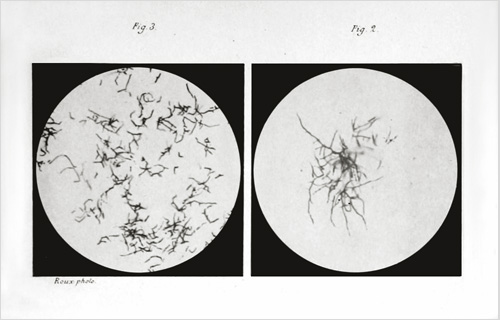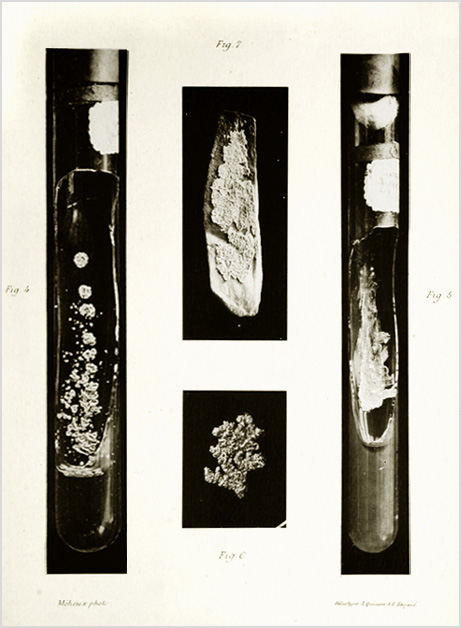

Journal : Annales de l'Institut Pasteur ; vol. 2.
Paris : G. Masson, 1888.
Description : 293–302 p., [2 l.] pl. ; ill.: 6 phot. figs., 1 drwg. ; 25 cm.
Photographs : 7 heliotypes on printed leaves ; 2 photomicrographs, 1 drawing (Pl. VII) & 4 images of cultures (Pl. VIII).
Photographers : Félix-Justinien Méheux (cultures) & Pierre-Paul-Émile Roux (photomicrographs).
Subject : Repiratory tract & skin — Nocardia asteroides ; nocardiosis.
Notes :


Nocard's discovery of the aerobic actinobacterium that bears his name. Over a period of two years, he worked with tissue samples that were sent by Couzin, an otherwise obscure surgeon veterinarian who was stationed in the french colony of Guadeloupe. The drawing of a diseased glandulous ox, reproduced by heliotype in Plate VII, is also attributed to Couzin. Most veterinarians believed that bovine farcy was related to tuberculosis, but finding no Koch bacillus after extensive tests, Nocard concentrated on lymph pus. He successfully exposed the microorganism with an early version of the Gram-Weigert method, first counterstaining with alcohol and then discoloring with aniline oil.
